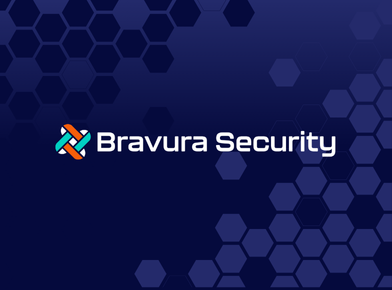This article was originally published by BeyondTrust. You can view the article here.
Last week, NIST released Version 2.0 of the widely used Cybersecurity Framework (CSF), its landmark guidance document for reducing cybersecurity risk. The NIST Cybersecurity Framework 2.0 has emerged not just as an update, but also as a transformative approach to securing digital assets and infrastructures. This evolution from its predecessor marks a significant step forward in addressing the nuanced and ever-expanding landscape of cyber threats and presents a forward-thinking perspective on cyber defense that recognizes the fluidity and complexity of the digital threat landscape.
In this blog, I cover the key updates to the framework, the cybersecurity challenges prompting NIST’s latest response, the new role of privilege access management (PAM) and identity security, and why the framework’s new perspective is imperative to today’s cybersecurity efforts.
What is NIST CSF?
The National Institute of Standards and Technology Cybersecurity Framework (NIST CSF), originally published in 2014, is a set of guidelines designed to help organizations improve their cybersecurity posture, better manage IT security risks, and enhance their protection against cyber threats. The 2024 release of version 2.0 of their Cybersecurity Framework represents the first major update since the NIST CSF was initially released.
The updates in NIST CSF 2.0 incorporate feedback from users and aim to better reflect the modern cybersecurity landscape and to address emerging threats and technologies, ensuring the framework remains relevant, effective, and capable of assisting organizations in enhancing their overall cybersecurity posture.
What’s new with NIST 2.0?
The CSF 2.0 Reference Tool
At the heart of NIST 2.0’s utility is the CSF 2.0 Reference Tool, an innovative platform that facilitates a deep, interactive engagement with the framework. This tool represents a significant leap forward in cybersecurity strategy implementation, enabling organizations to tailor the framework’s extensive guidelines to their unique circumstances. By providing customizable access to the framework’s core components, the tool empowers organizations to develop cybersecurity strategies that are not only robust and resilient, but also finely tuned to their specific operational landscapes.
Expanded scope
The original scope of NIST CSF was focused on the protection of critical infrastructure, such as energy companies, banks, and hospitals. NIST CSF 2.0 expands the scope of the security control’s guidance to organizations of all sizes and industries.
Enhanced clarity and usability
The latest version of NIST’s Cybersecurity Framework also provides guidance that is clearer and easier to interpret. This has improved accessibility for a broader range of users interested in implementing the framework.
New focus on emerging threats
The new version responds to the evolving threat environment, addressing contemporary cybersecurity challenges and technological advancements that have emerged since the framework’s inception. There is new emphasis on cloud security, supply chain risks, and the threats associated with artificial intelligence, the Internet of Things (IoT), and identity-based threats.
Expanded functions
Version 2.0 also adds a “Govern” function into its core framework, bringing the total to six functions. The addition of governance aims to improve the operationalization of risk management and decision-making. Incorporation of the governance function helps guide the overall implementation of NIST CSF and increase its effectiveness.
Emphasis on continuous, proactive evolution
A key tenet of the NIST Cybersecurity Framework 2.0 is its emphasis on continuous evolution. In recognizing that the cyber threat landscape is perpetually changing, the framework advocates for a proactive stance on cybersecurity, encouraging organizations to regularly review and update their cybersecurity practices. This culture of continuous improvement is vital for staying ahead of potential threats and ensuring cybersecurity measures, stay aligned with risks, and remain effective over time.
Integration of privacy and cybersecurity
The updated framework acknowledges the interconnection between cybersecurity and privacy and integrates privacy considerations, ensuring a more holistic approach to information security based on data and access.
A Focus on resilience
The NIST Cybersecurity Framework 2.0 encapsulates a forward-thinking approach, emphasizing the importance of developing cyber-resilient systems that don’t just prevent attacks, but also ensure rapid recovery from security incidents.
The updated NIST CSF urges organizations to not only respond to current threats, but also to anticipate future challenges. It offers guidance across the full attack lifecycle, from detection and incident response to recovery.
NIST CSF 2.0 – a renewed focus on Privileged Access Management (PAM) and Identity and Access Management (IAM)
At its core, the NIST 2.0 framework recognizes that Identity and Access Management (IAM) and Privileged Access Management (PAM) are not just technical safeguards, but rather strategic imperatives that underpin the security posture of modern organizations.
NIST CSF 2.0 and Identity and Access Management (IAM)
IAM systems are pivotal in ensuring that the right individuals have access to the appropriate resources, at the right times, and for the right reasons. This ensures a seamless and secure interaction with systems and data, bolstering productivity without compromising security.
In today’s digital age, the concept of “identity” has vastly expanded. It encompasses not only employees, but also customers, partners, and even devices or automated services. This broadening of the identity spectrum demands robust IAM solutions capable of managing complex hierarchies of user rights and permissions across diverse ecosystems. By prioritizing IAM, organizations can effectively manage digital identities. This is a crucial step in preventing data breaches and ensuring compliance with data protection regulations.
NIST CSF 2.0 and Privileged Access Management (PAM)
PAM takes on the critical role of controlling and auditing access privileges and protecting identities. Access to a privileged account could allow threat actors to make sweeping changes to IT systems, access sensitive data, and perform critical operational tasks. Mismanagement or exploitation of these accounts poses a significant risk. PAM solutions help mitigate this risk by enforcing least privilege principles, monitoring and auditing privileged sessions, and implementing stringent authentication measures to verify the identities of those requesting access.
With the expansion of cloud identities and access, there are many more planes of privilege to manage, and the line between “privileged” and “non-privileged” is increasingly blurred. PAM capabilities are critical for securing all workforce identities and managing all privileged access—no matter how ephemeral.
Start assessing the risks to your privileges and identities
Does NIST 2.0 map to a Zero Trust framework?
Within the NIST 2.0 framework, the emphasis on IAM and PAM dovetails with the principles of zero-trust— a security model that assumes breach and verifies each request as though it originates from an open network. This approach necessitates adaptive authentication mechanisms that can assess the risk context of each access request, adjusting authentication requirements in real time based on user behavior, location, device security posture, and other indicators of risk.
As organizations navigate their digital transformation journeys, the roles of IAM and PAM will only grow in importance. The integration of artificial intelligence and machine learning into these systems offers the potential to detect anomalies in user behavior more efficiently, predict potential security threats, and automate the complex processes of managing digital identities and access rights.
Why is NIST CSF 2.0 important?
Beyond individual organizations, the NIST Cybersecurity Framework 2.0 plays a crucial role in strengthening the broader cybersecurity ecosystem. By providing a common language and a shared set of practices, the framework fosters collaboration and knowledge sharing among stakeholders across the cybersecurity landscape. This collective approach is essential for building a more secure digital world, where information and resources are pooled to combat cyber threats more effectively.
The global applicability of the NIST Cybersecurity Framework 2.0 signifies a recognition of the interconnected nature of today’s digital world. By designing the framework to be adaptable across different regions and industries, NIST ensures that its guidance is relevant and actionable for a wide array of organizations worldwide. This global perspective is crucial for addressing cybersecurity challenges that cross national borders and affect diverse sectors of the economy.
NIST and BeyondTrust
For over a decade, since the launch of the inaugural NIST CSF version, BeyondTrust has provided solutions and guidance to help customers align with the framework. BeyondTrust welcomes the updated NIST CSF 2.0 guidelines, which will better poise those who adopt it in tackling modern threats.
If you have questions about NIST CSF 2.0, and how you can operationalize to better manage privileged access, secure identities, and detect and respond to threats, you can count on BeyondTrust as your trusted advisor. BeyondTrust’s commitment to mapping its solutions to the NIST framework highlights our understanding of the critical balance between innovation in cybersecurity practices and adherence to proven standards. When you choose BeyondTrust, it also simplifies your path to NIST CSF adoption, while helping you dramatically reduce your attack surface and improve cyber-resilience.
BeyondTrust’s solution can therefore be leveraged to meet the updates within CSF and provide focus on the best practices: Identify, Protect, Detect, Respond, and Recover.
1. Identify
The “Identify” function of the NIST Framework involves understanding the business context, the resources that support critical functions, and the related cybersecurity risks. This understanding helps an organization prioritize its efforts consistent with its risk management strategy and business needs.
Role of PAM:
- Asset Management: PAM solutions help in identifying and managing the accounts and systems that have elevated access, ensuring that these critical assets are cataloged and monitored.
- Business Environment Understanding: By managing and monitoring privileged accounts, PAM solutions provide insights into how these accounts affect the security and operation of critical business processes.
- Risk Management: PAM aids in identifying risks associated with privileged accounts, such as the risk of insider threats or external attacks exploiting these high-level credentials and the potential blast radius of any compromise.
2. Protect
The “Protect” function outlines appropriate safeguards to ensure the delivery of critical infrastructure services. Protection involves access control, awareness and training, data security, information protection processes, and maintenance.
Role of PAM:
- Access Control: PAM systems are essential for controlling access to privileged accounts, ensuring only authorized personnel have access to critical systems and information.
- Awareness and Training: PAM solutions can be integrated into security training programs, emphasizing the importance of privileged account management.
- Data Security: By controlling who has access to sensitive data and when, PAM helps protect data from unauthorized access and potential breaches.
- Maintenance: Regular maintenance of privileged accounts, such as password rotations, can be automated through PAM solutions, enhancing security.
3. Detect
The “Detect” function involves developing and implementing appropriate activities to identify the occurrence of a cybersecurity events that could negatively impact the organization.
Role of PAM:
- Anomalies and Events: PAM solutions can detect unusual access patterns or unauthorized attempts to access privileged accounts, signaling potential security incidents.
- Continuous Monitoring: PAM systems enable continuous monitoring of privileged account activities, providing real-time alerts on suspicious actions.
- Detection Workflows: Integration of PAM into the overall identity security fabric enhances the detection process, allowing for a more robust response to potential threats.
4. Respond
The “Respond” function includes activities to detect cybersecurity incidents. It involves incidence response planning, communications, analysis, mitigation, and overall improvements.
Role of PAM:
- Response Planning: PAM solutions help in response planning by providing information on who had access to what systems during an incident.
- Analysis: Investigating incidents involving privileged accounts can be streamlined with PAM solutions, which log and monitor all privileged account activities via session monitoring and auditing.
- Mitigation: In the event of a breach, PAM can quickly revoke access or shut down compromised accounts to limit damage and lateral movement.
5. Recover
The “Recover” function identifies appropriate activities to maintain plans for resilience and to restore any capabilities or services that were impaired due to a cybersecurity incident.
Role of PAM:
- Recovery Planning: PAM assists in recovery planning by ensuring that access to critical systems can be quickly restored in a controlled and secure manner after an incident and provide the credentials for backup images to ensure restored environments have the time-appropriate privileged accounts documented and readily available.
- Improvements: Post-incident analyses can be used to strengthen PAM policies and procedures, ensuring continuous improvement in privileged access security.






